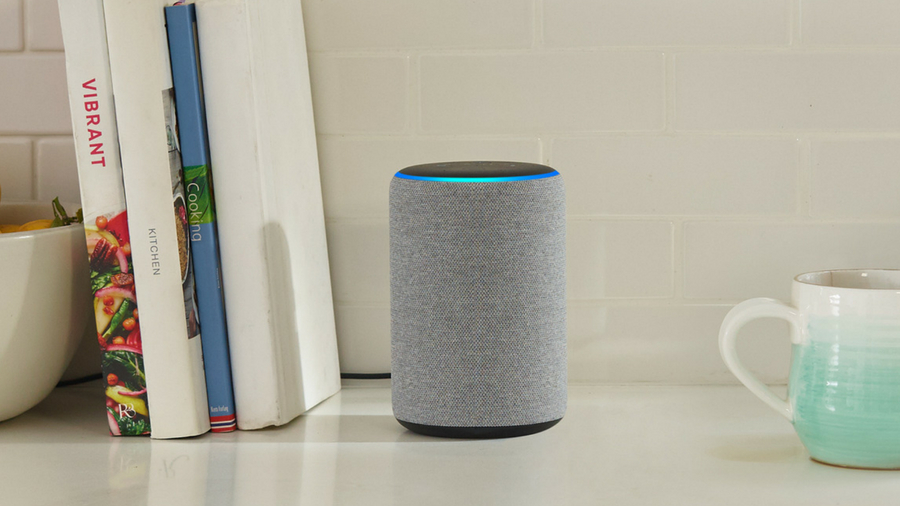TechRadar Verdict
The new Amazon Echo Plus ditches its original two-tier build for a design much like the mainline Amazon Echo, with improved audio components and a far more attractive design. As a smart home hub, however, it no longer has the edge.
Pros
- +
Better audio drivers
- +
Attractive fabric design
- +
Temperature sensor added
Cons
- -
Struggles with Fire TV commands
- -
Still won’t catch the ear of audiophiles
Why you can trust TechRadar
The latest (and greatest) Amazon Echo Plus smart speaker packs the same upgraded audio from previous Plus models into an overhauled Alexa smart speaker design. But the difference between this Plus and earlier versions isn't purely aesthetic, as we'll soon find out.
If you're shopping for an Alexa speaker, it's important to note that the Echo Plus was somewhat usurped by the new Amazon Echo (2019) – which in turn has been usurped by the Amazon Echo (2020). However, you can still buy the Echo Plus, and if you can find a good deal, it's definitely worth considering.
Amazon unveiled the first Echo Plus in 2017. The device was an important addition to the Amazon Echo range, offering a more premium smart speaker for those with more cash to spare looking for better audio quality.
The Echo Plus still had the same voice-activated Alexa smarts that make the Echo range so useful, but there were two significant new additions over the rest of the line-up.
Firstly, the Echo Plus has far better audio quality than the rest of the Echo range. The cheaper and smaller Echo Dot leaves a lot to be desired when it comes to audio. And the standard Echo will do for radio and podcasts, but it's pretty middling. However, the Echo Plus pushes the audio output to become one of the best smart speakers you can buy right now.
The Echo Plus also provides the smart home capabilities to function as a hub for all sorts of connected tech. This means you can communicate between your Philips Hue light bulbs, your Nest security cameras, your WeMo light switches and the rest – all through the same voice-command interface you use to check the weather, do your shopping, and stream songs from Spotify or Amazon Music, without the need for individual hub hardware for each gadget.
This latest Echo Plus 2018 model, the one we're reviewing here, still offers all of the same audio quality and improved functionality. But there's a difference.
This version of the Echo Plus has a new design as well as improved audio drivers. This makes the audio quality of the Plus even more premium, meaning it can better compete in the current market.
The big question is: does the upgraded Echo Plus manage to stand out amongst the rest? And is it still worth buying in 2021? Read on to find out what we thought after a few weeks of testing.
- Read our Amazon Echo 2020 review and Amazon Echo Dot review
- Try Amazon Music Unlimited with a FREE trial: US | UK | AU

What is an Echo Plus used for?
Think of the Amazon Echo Plus as your own personal assistant. We’re not at the stage where our tech can physically help us run our homes, but it can do everything else. So you can ask the Plus’ voice assistant, Alexa, to answer questions about the time, general knowledge, traffic, what the weather is going to be like and everything else that might help your day run a bit smoother.
Thanks to smart home tech all connecting up, you can also use your Echo Plus to control other devices that you might have in your home. So let’s say you have a Philips Hue lightbulb, for example, the Echo Plus can control that too. You’d just need to say “Alexa, turn off the bulb.”
That’s just the beginning. The Echo Plus has a whole host of ‘skills’ which you can think of as separate apps and things it can do for you, from playing games to controlling other tech to waking you up in the morning.
What devices work with an Echo Plus?
There are lots of devices that work with the Echo Plus. Including smart home interface ZigBee, the Philips Hue smart lighting system, Samsung SmartThings devices and many more. It’s worth checking whether the next smart home device you buy is Alexa-enabled – chances are these days it will be.
Is Echo Plus better than Echo?
Can't decide between the Echo Plus and the Echo? Which device is better depends which generation you're looking at. The Echo Plus had better speakers than the Echo 2017, but the newer Echo (2020) use the same drivers as the Echo Plus – so there's not a huge amount of difference nowadays.
Is there a monthly fee for an Echo Plus?
No, there’s no monthly fee for the Echo Plus. You just need to buy the device and have an Amazon account. You’ll then need to get the Amazon Echo app, which is also free.
However, if you’re an Amazon Prime member you’ll get some added benefits, like access to Amazon Music through your Echo Plus.
Does the Echo Plus have to be plugged in?
Yes it does. The Echo Plus does not have batteries, hence it needs to be connected to the power in your house in order to work.
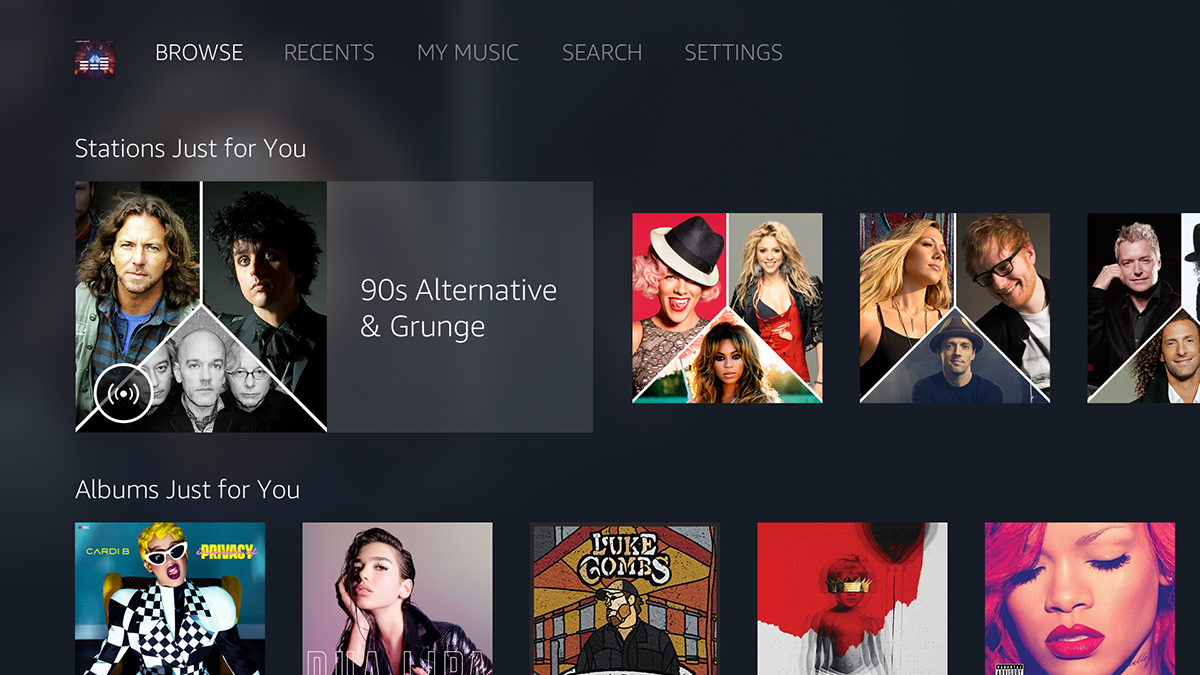
Price and competitors
The new Amazon Echo Plus is priced at the same $149.99 / £139.99 / AU$229 as the previous model, making it pretty good value given the improvements to its internal hardware and external smart gear pairings.
Comparatively, it's still far cheaper than the now discontinued Apple HomePod or Sonos One, though you could argue they both do provide a superior audio experience, too.
The Amazon Echo Show, however, puts the Echo Plus in an interesting position, as it too acts as a Zigbee smart home hub, stripping the Plus of what was once one of its unique selling points – something that seems to happen a lot with the Plus.
The new Echo Studio for example, is Amazon's best speaker for music yet, blowing the Echo Plus' once unique audio capabilities out of the water with Dolby Atmos; still, the newer speaker is considerably more expensive than the second-gen Echo Plus.
- Amazon Echo vs Echo Plus: does it really make a difference?
Echo Plus design
The previous Echo Plus was marked by its tall, industrial design and visible speaker grilles. Visually it now has a lot more in common with the standard Amazon Echo, featuring an attractive mesh fabric mesh that will probably look more at home in, well, your home.
In keeping with most of the Echo range, the physical volume dial has also been replaced with a number of buttons on the top face of the speaker: two to control volume, one to mute, and an 'action button' to call Alexa to attention.
Around the rim is an LED ring that flashes blue when Alexa speaks or hears your wake word, and tracks 30 volume levels when going louder or quieter. At the rear you'll find the usual power port and 3.5mm AUX port for linking to an external speaker or headphones, too.
The Amazon Echo Plus is also now considerably shorter, and slightly fatter, with dimensions of 148 x 99 x 99mm compared to the previous 235 x 84 x 84 mm. At 780g (down from just under a kilogram), however, it's also shed a decent few pounds.
In terms of colors, it apes the Echo Dot's Charcoal, Heather Gray or Sandstone options.

There are other small cosmetic changes: the Amazon logo has moved from the main body to the underside of the speaker, while the 'mute' button has ditched its microphone symbol for a less evocative crossed circle. The upper and bottom rims also curve into the body of the speaker, rather than having a sharp drop.
Overall, the new Amazon Echo Plus gives the impression of something warmer and friendlier than before – unsurprising given how wary some consumers still are about having an always-on listening device in their home.
But it does now look uncannily similar to a standard Amazon Echo. The sheer number of devices in the Echo range has always been to Amazon's strength – the minuscule Echo Dot, the portable Echo Tap, the screen-based Echo Show, to name but a few – allowing users to tailor their Echo purchase to their particular needs.
But as that range expands, the separation between the standard Echo and Echo Plus looks more and more blurred.
Performance
If you’re buying an Amazon Echo smart speaker of any kind, it’s likely because of Amazon’s voice-activated Alexa smart assistant, increasingly present in all sorts of smart home devices from speakers and amps to a microwave and Alexa wall clock. Seriously.
Featuring seven distinct microphones for picking up your various whims and voice commands, the Amazon Echo Plus (2018) is predictably adept at picking out voices from noisy environments, and has the same smart capability to play music and podcasts, connect to other smart home devices, and tell you about the day’s weather, traffic, news, and various trivia.
That's not to mention the Alexa 'Skills' system, which allows you to specifically download more enhanced features and capabilities for your specific needs (don't worry, they're free).
One of the great strengths of the Alexa ecosystem is that all Alexa-enabled devices benefit from the continual improvement of its software, so anyone still using the last-generation Echo Plus will get the same Alexa experience as someone using the new model. So if you’re thinking of buying this year’s iteration, it’ll be more down to factors like design, audio, and smart hub connectivity.
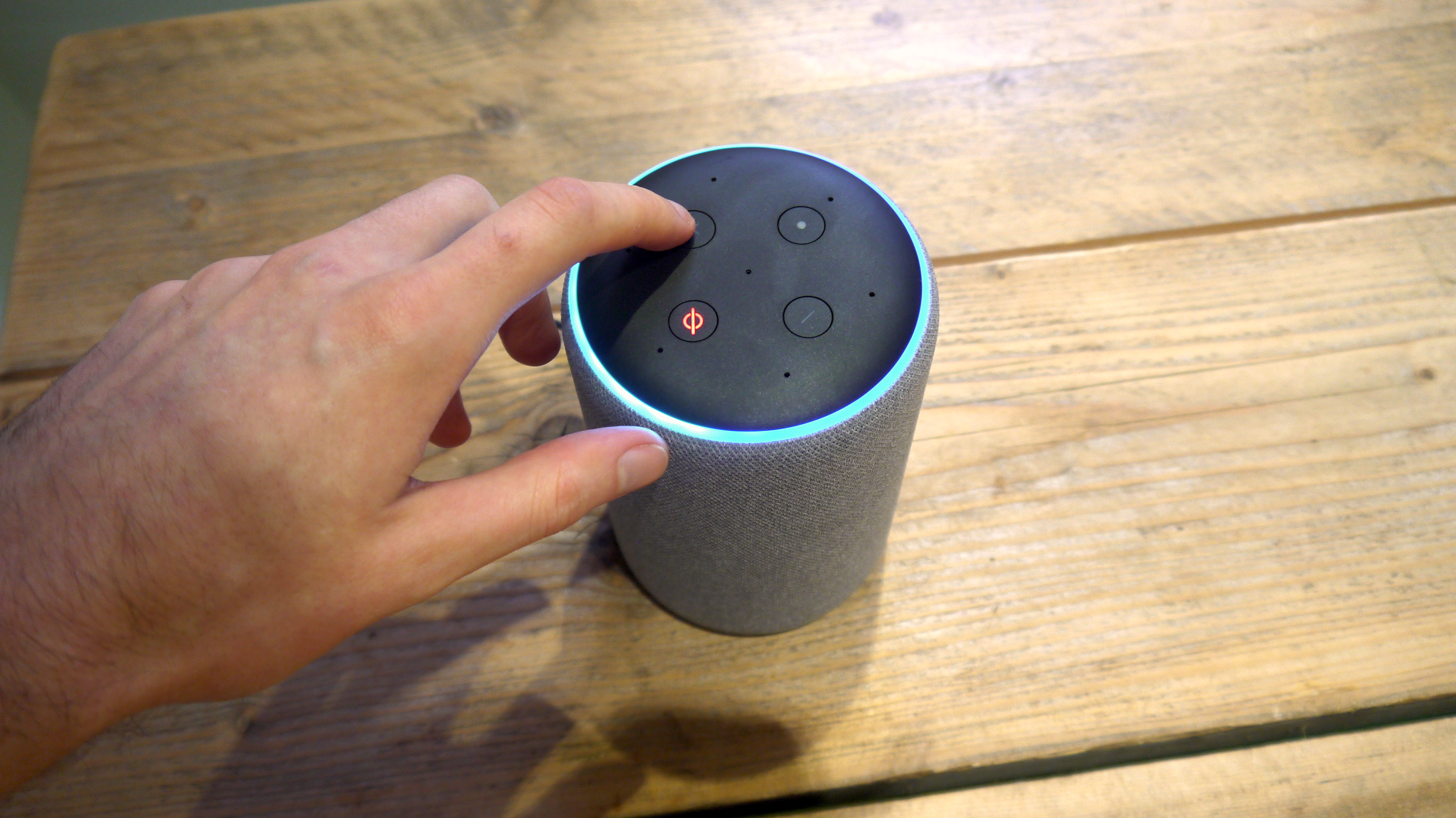
A new audio feature unique to the Echo Plus is the ability to make a 'stereo pair' of two Echo Plus speakers, creating more immersive audio than the mono nature of the standard setup. Another new entry on the Echo line, the Echo Sub, can also be tied in to boost the bass performance.
There's potential for a real step up on the system's audio performance – even it won't mean much to the person buying just a single Echo Plus speaker. You'd have to be truly invested in the Echo line to opt for this sort of set up rather than, say, a dedicated high-end stereo system paired with an Echo Dot.
A truly smart addition comes in the form of a temperature sensor built into the speaker, which monitors the room temperature in the Alexa smartphone app or can be found out by asking Alexa verbally. This is useful as a standalone feature, but also if you opt for a wider setup of smart home devices, like connecting to a smart thermostat to turn up the heating if things get chilly.
Sound
The main draw for the Amazon Echo Plus has always been in its improved audio credentials over the rest of the Echo range.
That argument, however, has got progressively weaker in the face of premium Alexa-enabled hifi systems, like the Sonos One – and even the newly-announced Echo Link and Echo Link Amp.
Still, the Echo Plus retains its omnidirectional Dolby Audio and 0.8-inch tweeter, with a slightly larger 3.0-inch neodynium (fancy magnet) subwoofer. There's definitely more of a kick to the bass, even if the downward-firing woofer can feel a bit tacked on, with the lack of a mid-range speaker making the gap between the high and low frequencies a bit too apparent.
It's not quite premium audio, but still achieves a pretty convincing impression of a full, warm-bodied sound. For casual day-to-day use it's perfectly capable of capturing the airy vocals of Ariana Grande's No Tears Left To Cry, or bringing out the clash of orchestral string instruments and pumping bass in Hot Chip's I Feel Better.
You won't hear much of a difference to Alexa's own monotone. When listening to the radio or podcasts, though, the boosted audio gives a rounded, natural sound to voices.
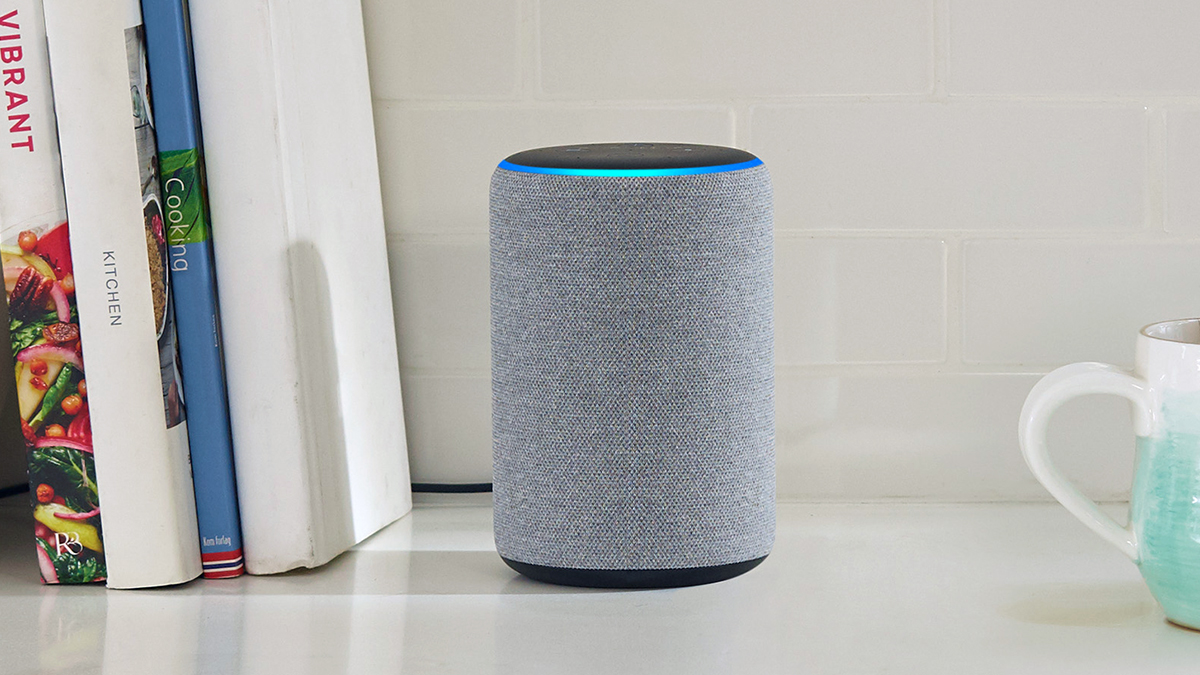
On grounds of sound quality alone, the Amazon Echo Plus really seems worth the small jump in price from the standard Echo – that is, if you're not an audiophile committed to buying something more high-end.
Meanwhile, the AUX port and Alexa's multi-room functionality mean you can always connect to other external speakers if the mood strikes you – but more on this in the next section.
Smart functionality
We've talked a lot about how the Amazon Echo Plus functions as a standalone speaker – but what about how it connects to the rest of your smart home?
A big selling point of the previous Echo Plus was ZigBee: a smart home interface that could connect the speaker to a range of other smart home devices that wouldn't otherwise be able to communicate with an Echo device.
Cue smart switches, cameras, thermostats and bulbs suddenly under the dominion of your central Echo Plus speaker, to be commanded with ease over the Alexa app or by standard voice control. A Philips Hue White Bulb is even bundled in with your Echo Plus for free!
Alexa's hold on the market, however, has meant that manufactures are increasingly choosing to simply build Alexa functionality directly into their products, meaning that any Echo device can connect to them, regardless of whether they come with ZigBee or not.
Be that as it may, ZigBee still allows you to connect to certain devices you might not be able to otherwise, and Alexa generally does a fantastic job of controlling various systems and devices all in one place – all of which can be individually named for easy voice commands through the Echo Plus.
When it comes to other Echo devices, you'll usually want to avoid having too many in the same room, if just because it can be fiddly trying to figure out which one you want to speak to. But it's relatively easy to connect them in the Alexa app, and then enjoy sending announcements, messages, or voice calls to other Echos in the home or beyond.
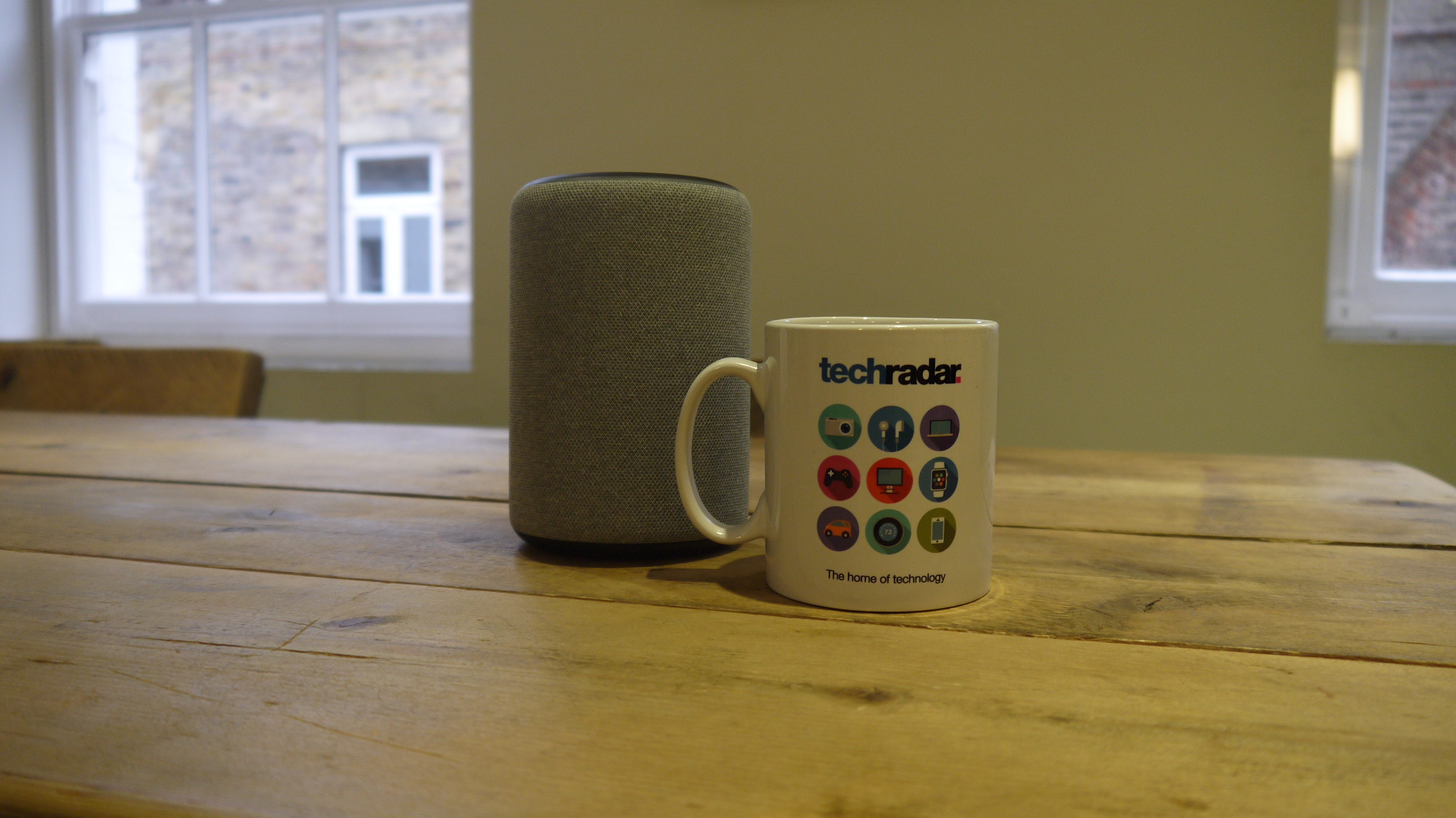
You can now also use your Echo to make calls to mobile phone numbers – a feature previously available in the US, Canada and Mexico, but which has only recently come to the UK. (In the UK you won't be able to receive calls from mobile numbers, though, unless you've linked your Echo to a Vodafone Red pay monthly SIM plan.)
There's wider potential to link up with Amazon's Fire TV or Fire TV stick – or more recently, the Fire TV Cube – which requires you to head into your Alexa app 'Settings' to get it talking with your Echo. Even when linked up, though, it can be a hassle to get them to communicate reliably.
It's not too hard to summon Amazon Prime Video and supported services like Netflix, or just request a specific TV show or title and see where it takes you. Asking Alexa to play Bojack Horseman yielded results, though anything with a less unique name could get confused with the Echo Plus' music search, if you don't specify the Fire TV clearly in your command.
Even when watching the Netflix Original show on the TV Stick, we then found the Echo Plus was unable to pause, skip, or generally do anything to it that wasn't opening and closing the app entirely – or searching for a different title. We're conscious these may primarily be issues with pre-launch software, so we'll be updating this section in the near future.
There are certainly strides being made for this sort of in-house connectivity, but at the moment you're probably better off using your streaming stick or Fire TV separately – and with the remote.
Our verdict
The Amazon Echo Plus 2018 version offers a great-looking overhaul of the smart speaker's design, positioning it much more as a lifestyle product than an industrial sound-vent.
This design refresh with a broader appeal, along with its new temperature sensor and enhanced audio drivers, make it an appealing proposition for those wanting a multi-purpose smart speaker with more capable sound than the standard Echo.
There are, however, a lot of other options out there. If the Echo Plus won't offer the sound quality you need, there's always the Echo Link tied to a separate speaker, the new Echo Studio, or the Sonos One – or even something out of the Alexa ecosystem entirely. In fact, we'd recommend either of those two speakers if audio quality is your main concern.
Now that the new Amazon Echo (2020) shares so many of the Plus' features, it's unlikely that Amazon will maintain the Plus in the long term. The newer Echo also comes with the AZ1 Neural Edge processor. This processes your commands before they are sent to Amazon’s computers in the cloud to work out what you are trying to say. Amazon says this results in faster responses from Alexa, cutting the lag by a few hundred milliseconds each time.
That's not to say that you shouldn't buy it – if you can get a good deal on the Echo Plus, you could save yourself a fair amount of money by opting for an older model.
- The best Amazon Echo deals and sales
- Already got yourself a speaker from the Amazon Echo range? Here are all the best Amazon Alexa skills you need to be using now
Henry is a freelance technology journalist, and former News & Features Editor for TechRadar, where he specialized in home entertainment gadgets such as TVs, projectors, soundbars, and smart speakers. Other bylines include Edge, T3, iMore, GamesRadar, NBC News, Healthline, and The Times.
